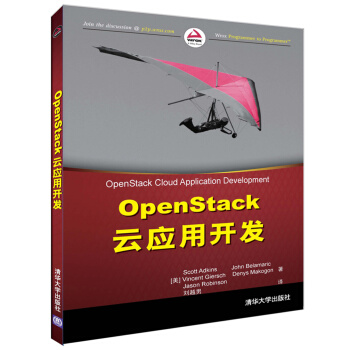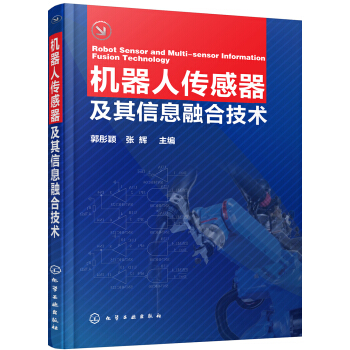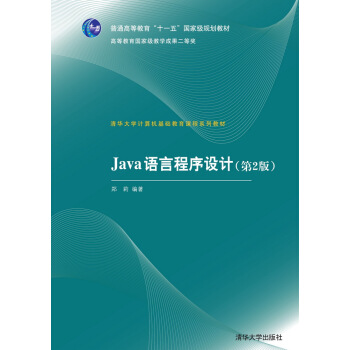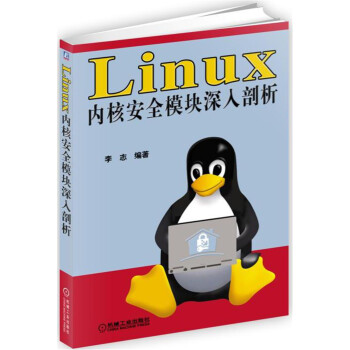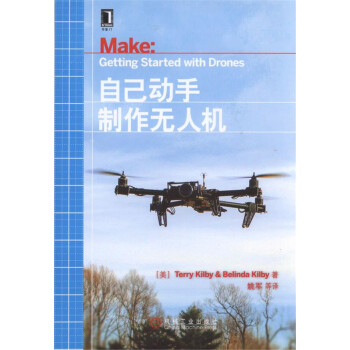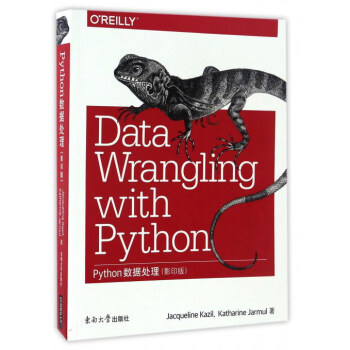

具体描述
內容簡介
《Python數據處理(影印版 英文版)》嚮非程序員展示瞭如何處理本質上太雜亂或難以下手的信息。你不需要瞭解Pvthon編程語言基礎知識就可以開始瞭。通過循序漸進的練習,你將學習如何有效地獲取、清理、分析和呈現數據。你還將瞭解如何將數據處理自動化,安排文件編輯和清理任務,處理*大的數據集,以及使用所獲取的數據講述引人注目的故事。
快速學習基本的Python語法、數據類型和語言概念使用機器可讀和人類可用的數據抓取網站和API以查找大量有用的信息清理和格式化數據以消除數據集裏的重復和錯誤數據瞭解何時標準化數據以及何時測試和編寫腳本進行數據清理使用新的Python庫和技術探索並分析數據集使用Python解決方案自動化整個數據處理過程
目錄
Preface1. Introduction to Python
Why Python
Getting Started with Python
Which Python Version
Setting Up Python on Your Machine
Test Driving Python
Install pip
Install a Code Editor
Optional: Install IPython
Summary
2. Python Basics
Basic Data Types
Strings
Integers and Floats
Data Containers
Variables
Lists
Dictionaries
What Can the Various Data Types Do?
String Methods: Things Strings Can Do
Numerical Methods: Things Numbers Can Do
List Methods: Things Lists Can Do
Dictionary Methods: Things Dictionaries Can Do
Helpful Tools: type, dir, and help
type
dir
help
Putting It All Together
What Does It All Mean?
Summary
3. Data Meant to Be Read by Machines
CSV Data
How to Import CSV Data
Saving the Code to a File; Running from Command Line
JSON Data
How to Import ]SON Data
XML Data
How to Import XML Data
Summary
4. Working with Excel Files
Installing Python Packages
Parsing Excel Files
Getting Started with Parsing
Summary
5. PDFs and Problem Solving in Python
Avoid Using PDFs!
Programmatic Approaches to PDF Parsing
Opening and Reading Using slate
Converting PDF to Text
Parsing PDFs Using pdfminer
Learning How to Solve Problems
Exercise: Use Table Extraction, Try a Different Library
Exercise: Clean the Data Manually
Exercise: Try Another Tool
Uncommon File Types
Summary
6. Acquiring and Storing Data
Not All Data Is Created Equal
Fact Checking
Readability, Cleanliness, and Longevity
Where to Find Data
Using a Telephone
US Government Data
Government and Civic Open Data Worldwide
Organization and Non-Government Organization (NGO) Data
Education and University Data
Medical and Scientific Data
Crowdsourced Data and APIs
Case Studies: Example Data Investigation
Ebola Crisis
Train Safety
Football Salaries
Child Labor
Storing Your Data: When, Why, and How?
Databases: A Brief Introduction
Relational Databases: MySQL and PostgreSQL
Non-Relational Databases: NoSQL
Setting Up Your Local Database with Python
When to Use a Simple File
Cloud-Storage and Python
Local Storage and Python
Alternative Data Storage
Summary
7. Data Cleanup: Investigation, Matching, and Formatting
Why Clean Data?
Data Cleanup Basics
Identifying Values for Data Cleanup
Formatting Data
Finding Outliers and Bad Data
Finding Duplicates
Fuzzy Matching
RegEx Matching
What to Do with Duplicate Records
Summary
8. Data Cleanup: Standardizing and Scripting
Normalizing and Standardizing Your Data
Saving Your Data
Determining What Data Cleanup Is Right for Your Project
Scripting Your Cleanup
Testing with New Data
Summary
9. Data Exploration and Analysis
Exploring Your Data
Importing Data
Exploring Table Functions
Joining Numerous Datasets
Identifying Correlations
Identifying Outliers
Creating Groupings
Further Exploration
Analyzing Your Data
Separating and Focusing Your Data
What Is Your Data Saying?
Drawing Conclusions
Documenting Your Conclusions
Summary
10. Presenting Your Data
Avoiding Storytelling Pitfalls
How Will You Tell the Story?
Know Your Audience
Visualizing Your Data
Charts
Time-Related Data
Maps
Interactives
Words
Images, Video, and Illustrations
Presentation Tools
Publishing Your Data
Using Available Sites
Open Source Platforms: Starting a New Site
Jupyter (Formerly Known as IPython Notebooks)
Summary
11. Web Scraping: Acquiring and Storing Data from the Web
What to Scrape and How
Analyzing a Web Page
Inspection: Markup Structure
Network/Timeline: How the Page Loads
Console: Interacting with JavaScript
In-Depth Analysis of a Page
Getting Pages: How to Request on the Internet
Reading a Web Page with Beautiful Soup
Reading a Web Page with LXML
A Case for XPath
Summary
12. Advanced Web Scraping: Screen Scrapers and Spiders
Browser-Based Parsing
Screen Reading with Selenium
Screen Reading with Ghost.Py
Spidering the Web
Building a Spider with Scrapy
Crawling Whole Websites with Scrapy
Networks: How the Internet Works and Why It's Breaking Your Script
The Changing Web (or Why Your Script Broke)
A (Few) Word(s) of Caution
Summary
13. APIs
API Features
REST Versus Streaming APIs
Rate Limits
Tiered Data Volumes
API Keys and Tokens
A Simple Data Pull from Twitter's REST API
Advanced Data Collection from Twitter's REST API
Advanced Data Collection from Twitter's Streaming API
Summary
14. Automation and Scaling
Why Automate?
Steps to Automate
What Could Go Wrong?
Where to Automate
Special Tools for Automation
Using Local Files, argv, and Config Files
Using the Cloud for Data Processing
Using Parallel Processing
Using Distributed Processing
Simple Automation
CronJobs
Web Interfaces
Jupyter Notebooks
Large-Scale Automation
Celery: Queue-Based Automation
Ansible: Operations Automation
Monitoring Your Automation
Python Logging
Adding Automated Messaging
Uploading and Other Reporting
Logging and Monitoring as a Service
No System Is Foolproof
Summary
15. Conclusion
Duties of a Data Wrangler
Beyond Data Wrangling
Become a Better Data Analyst
Become a Better Developer
Become a Better Visual Storyteller
Become a Better Systems Architect
Where Do You Go from Here?
A. Comparison of Languages Mentioned
B. Python Resources for Beginners
C. Learning the Command Line
D. Advanced Python Setup
E. Python Gotchas
F. IPython Hints
G. Using Amazon Web Services
Index
用户评价
這本書的編排方式給我留下瞭深刻的印象。它並非按照傳統的“概念-示例”模式,而是更加注重“問題-解決方案”的教學方式。書中會先拋齣一個實際的數據處理場景,然後逐步引導讀者通過 Python 代碼來解決這個問題。這種方式讓我覺得非常有代入感,能夠清晰地看到數據處理在現實世界中的應用。我特彆喜歡書中關於數據清洗的部分,它涵蓋瞭缺失值處理、異常值檢測、重復值去除等多種常見問題,並且提供瞭多種不同的處理策略。此外,關於文本數據處理的章節也讓我受益匪淺,學習瞭如何使用正則錶達式、NLTK 等庫來提取和分析文本信息。書中的代碼風格嚴謹,注釋清晰,便於讀者理解和模仿。而且,作者在講解的過程中,還會適時地引用一些數據科學領域的最佳實踐,這對於培養良好的編程習慣非常有幫助。總的來說,這是一本能夠真正幫助讀者解決實際數據處理問題的實用指南。
评分作為一名從其他編程語言轉嚮 Python 的數據科學傢,這本書為我提供瞭一個非常紮實的 Python 數據處理基礎。過去我習慣於使用 R 或 SQL 進行數據處理,而 Python 的生態係統對我來說是全新的。這本書的優點在於,它並沒有假設讀者對 Python 有深入的瞭解,而是從 Python 的基本語法和數據結構開始,然後逐步過渡到 Pandas、NumPy 等核心庫。對於我這樣有編程背景的人來說,這種循序漸進的方式非常有效,能夠快速地將我的已有知識遷移到 Python 環境中。書中對 Pandas DataFrame 的講解尤其細緻,包括各種索引方式、數據對齊、多級索引的處理,這些都是我在實際工作中經常遇到的痛點。此外,書中還包含瞭一些關於數據可視化和機器學習預處理的內容,這對我來說是錦上添花。整體而言,這本書是一本非常實用的工具書,我會在未來的工作中經常翻閱,作為重要的參考資料。
评分我是一名在學術界從事數據分析的科研人員,經常需要處理各種復雜的研究數據。這本書的內容在我的研究工作中起到瞭關鍵作用。它對於如何高效地加載、清洗和轉換不同來源的數據提供瞭非常詳細的指導。我尤其欣賞書中關於數據聚閤和分組的講解,它提供瞭多種靈活的方式來計算匯總統計量,並能夠根據不同的分組條件進行分析,這對於探索性數據分析和特徵工程至關重要。書中的可視化部分也十分齣色,它不僅介紹瞭 Matplotlib 和 Seaborn 等常用庫的基礎用法,還提供瞭一些高級技巧,例如如何創建交互式圖錶和自定義圖錶樣式,這對於撰寫科研論文和展示研究成果非常有幫助。此外,書中對數據文件的讀寫格式也進行瞭廣泛的介紹,包括 CSV、Excel、JSON,甚至還有一些數據庫的接口,這讓我能夠輕鬆地處理來自不同平颱的數據。這本書的知識深度和廣度都令人贊嘆,無疑是我近年來閱讀過的最富有成效的關於數據處理的書籍之一。
评分這本書的內容簡直是打開瞭我對Python數據處理的全新視角!作為一名初學者,我一直覺得數據處理是個龐大而復雜的領域,但這本書以一種非常易於理解的方式,循序漸進地引導我進入瞭這個世界。它不僅僅是簡單地羅列函數和語法,而是通過大量生動的實際案例,讓我體會到數據處理的魅力。從數據清洗、轉換到可視化,每一個步驟都講解得淋灕盡緻。我特彆喜歡它在講解 Pandas 時,不僅介紹瞭常用的 DataFrame 和 Series 操作,還深入剖析瞭索引、閤並、分組等核心概念,並且提供瞭很多優化技巧。讀這本書的時候,我常常會跟著作者的例子一步一步地在自己的環境中敲代碼,每一次都能有所收獲。書中的配圖和圖錶也起到瞭畫龍點睛的作用,將抽象的數據概念形象化,幫助我更好地理解。而且,這本書的英文寫作風格非常清晰流暢,即使有些專業術語,結閤上下文也能很好地理解。感覺就像是在和一位經驗豐富、樂於分享的朋友一起學習,沒有壓力,隻有滿滿的成就感。
评分我必須說,這本書絕對是數據分析師的“寶藏”。我是一名有幾年工作經驗的數據分析師,一直在尋找能夠深化我對數據處理理解的書籍,這本書恰好滿足瞭我的需求。它並沒有停留在基礎操作層麵,而是深入探討瞭更高級的數據轉換技術,例如復雜的聚閤函數、窗口函數的使用,以及如何利用 Python 的強大庫來處理非結構化數據。我尤其對書中關於性能優化的章節印象深刻,它講解瞭如何避免常見的性能陷阱,以及如何利用 NumPy 和 Cython 等工具來加速計算。這對我日常工作中處理海量數據非常有幫助。這本書的邏輯結構非常清晰,每一章都建立在前一章的基礎上,讓你能夠係統地構建自己的數據處理知識體係。作者在講解過程中,不僅給齣瞭代碼示例,還詳細解釋瞭每個代碼片段背後的原理和設計思路,這對於理解“為什麼”比“怎麼做”更重要。讀完這本書,我感覺自己對數據處理的掌握程度又提升瞭一個層次,能夠更自信地應對各種復雜的數據挑戰。
评分好东西下次还会买,所以千万别错过,否则会后悔的。
评分书本身是不错,但跟sklearn挂在网上的官方文档,好像也没多大区别。
评分学习相关内容的一本很不错的参考书,值得一读。
评分书的印刷纸张还行,比同一出版社和印厂影印的high performance browser networking的要好一些。
评分还可以可以可以可以还可以可以可以可以还可以可以可以可以
评分书是正版,质量很好。是很好的参考书
评分京东的活动是读书人的福音,多多益善。
评分我为什么喜欢在京东买东西,因为今天买明天就可以送到。我为什么每个商品的评价都一样,因为在京东买的东西太多太多了,导致积累了很多未评价的订单,所以我统一用段话作为评价内容。京东购物这么久,有买到很好的产品
评分送货快,趁活动赶紧囤,券不要那么难抢就更好了
相关图书
本站所有內容均為互聯網搜索引擎提供的公開搜索信息,本站不存儲任何數據與內容,任何內容與數據均與本站無關,如有需要請聯繫相關搜索引擎包括但不限於百度,google,bing,sogou 等
© 2025 tushu.tinynews.org All Rights Reserved. 求知書站 版权所有

